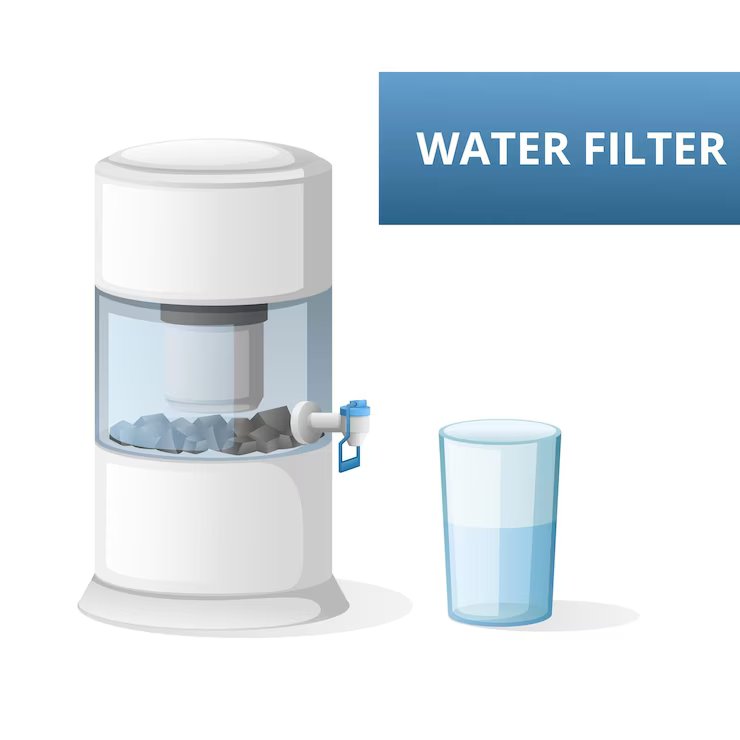Turning on the tap is all it takes for most people in the world to get a sip of hygienic drinking water. Although there are many alternatives for filtering and purifying water, some of the terminology used in these processes is unfortunately unclear and not often standardized. Let us now look at the correct terminology to use when looking into and comparing filtration and purification options, and the advantages and disadvantages of each technique.
Purification vs Filtration
The first thing you need to understand about drinking water is the distinction between filtration and purification. They are not equivalent.
Water filtration is the process of ridding the water of debris and some bacteria using a sieve made of cloth or mesh net. By using chemicals or ultraviolet light, water can be made safe by neutralizing germs and other dangerous substances. These purifying processes essentially deactivate the undesirable elements, making the food safe for eating. Water may require one of these procedures or both at different times. However, being aware of the difference can save your life.
Water Filtration
Indeed, using a water filter—especially one that has been tested professionally as opposed to the do-it-yourself one from the backwoods—can kill some microorganisms, but not everyone. Protozoa and bacteria can be removed by filters; however, viruses cannot be removed from the water because they are too small to fit through the mesh.
When people fall ill when trekking or camping and attribute it to the water, it's frequently discovered to be a sanitation issue. The optimum flavor is also ensured by filtering water.
Water Purification
By neutralizing all dangerous pathogens, including viruses, water filtration renders water safe to drink. Contaminants are still present after purification. Even after being cleaned, water is still contaminated and likely requires filtering.
Most commonly, boiling, chemical agents, or UV radiation are used for purification. When visiting places outside of the first world where viral diseases are more prevalent, it is very crucial.
Let's now talk about the various filtration and purifying techniques available.
Boiling
This is the most straightforward method one might use. When using tap water for cooking or even drinking while at home, make sure to boil it for at least 20 minutes at a high temperature. All the bacteria, viruses, and parasites that could be present in the water are eradicated by boiling. Easy enough, isn’t it?
Chlorination
To purify water before ingesting, one might easily use liquid household chlorine. It is important to always remember to use the right ratio or amount of water to the appropriate chlorine content. Never go above the prescribed amount of chlorine that needs to be added to water to treat it. The only drawback to this procedure is that you will have an odd aftertaste and odor. Adding chlorine to the water and prolonged exposure to chlorine may be bad for health and may lead to life-threatening conditions.
Filtration
It is one of the best methods for cleaning water. This technique uses several physical and chemical procedures to clean the water and make it suitable for human consumption. Depending on the type of filter, it takes care of sediments and impurities in the water be they bacterial or chemical.
Distillation
This is more of a scientific process where water is boiled, and the water vapor is collected. This vapor is connected to a condenser, which then collects the water for drinking. Although it seems like a legitimate procedure, the biggest drawback is that the purifying process is cumbersome. It treats bacteria and germs, but it is also an expensive endeavor.
Water Purifiers
You are undoubtedly already familiar with this type of purifier. It is commonly seen in most homes nowadays. There are many different purifiers on the market, but we advise choosing UV RO purifiers because they are the most suitable for homes. UV RO water purifiers are suitable for treating most types of water, be it tanker water or municipality water.
Filtration through matkas or clay vessels
Clay jars are regarded as useful for storing and filtering water in various regions of India and other nations as well. Muddy water could be cleaned using a clay pot or container that has a lot of pores. Clay containers are thought to be excellent for enhancing the cleanliness of the water.
Reverse Osmosis
In the past, RO water purification was primarily used in industrial and commercial settings. However, RO purification has recently emerged as the most dependable and widely used technique for purifying drinking water in homes. Water is forced across a semipermeable membrane during the reverse osmosis process to remove impurities.
Water purifying tabs
These tablets' primary ingredients would either be chlorine dioxide or iodine. They eliminate a wide range of bacteria and other microorganisms that might be present in water. The water needs to be left alone for 30 minutes to be cleaned. Although using these tablets can give water an unappealing flavor and odor. Additionally, they don't do a very good job of getting rid of the potential chemical components in water. So, no, it isn't a completely approved method for removing contaminants from drinking water.
Solar Purification
This is another form of distillation, that heats the water using the power of the sun and then collects the pure water vapor and stores it for drinking.
Iodine
The bacteria and viruses that might be in your water are known to be killed by this chemical. It is a much stronger disinfectant than filtration and is also more efficient. You heard us correctly, yes! But, don't get too enthusiastic, as drinking iodine-treated water could leave a bad taste in your mouth.
UV Purification
UV radiation is used to purify the water, and it works by essentially destroying the DNA of the bacteria or microorganisms so that they can no longer reproduce. However, this method falls short when it comes to purging the water of physical contaminants and heavy metals.
About Livpure
If you are looking for a reliable company that manufactures water purifiers and can keep your drinking water safe at home, your best bet is Livpure. Livpure embodies the spirit of the SAR group and was born out of the company's enthusiasm for the environment, sustainability, and creating a safe world for the next generation. Livpure has made a name for itself in India as one of the most dependable producers of some of the best water purifiers available. It is the result of many years of development and research, and it is designed to provide water purifiers to millions of people. To deliver clean drinking water to every Indian consumer, we began by researching cutting-edge water purifiers.
Also Read : Some Easy And Effective Ways To Purify Water



